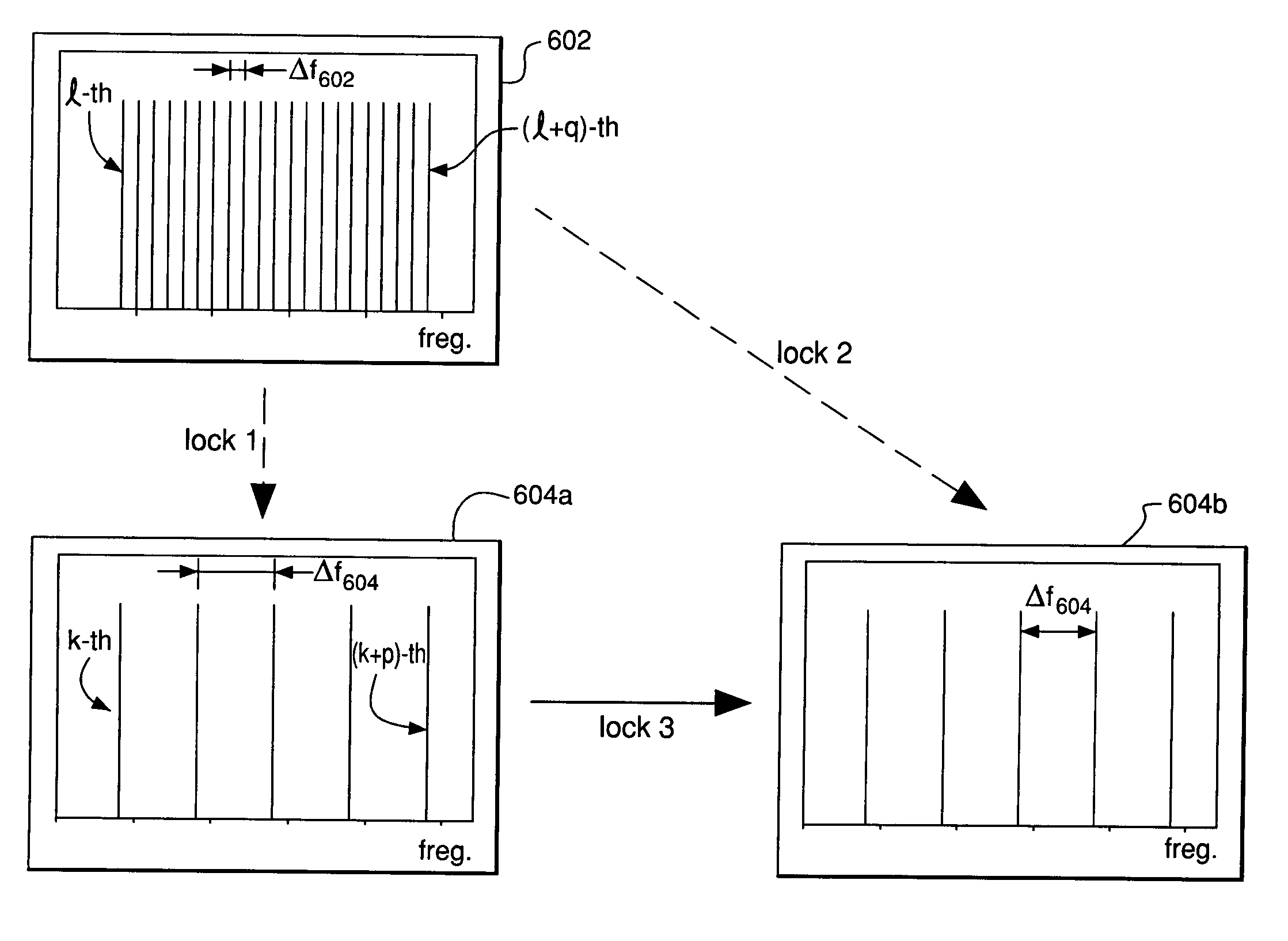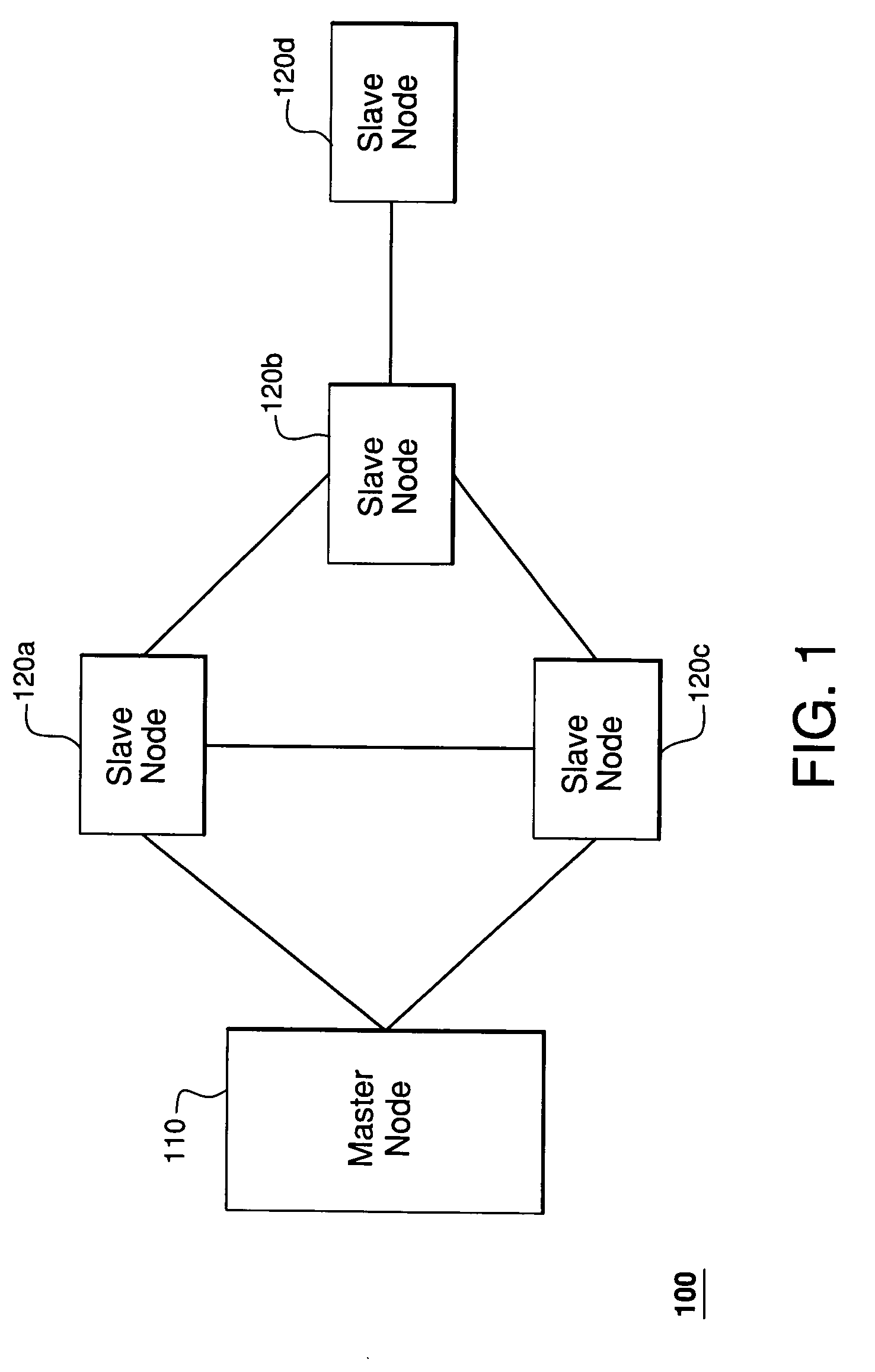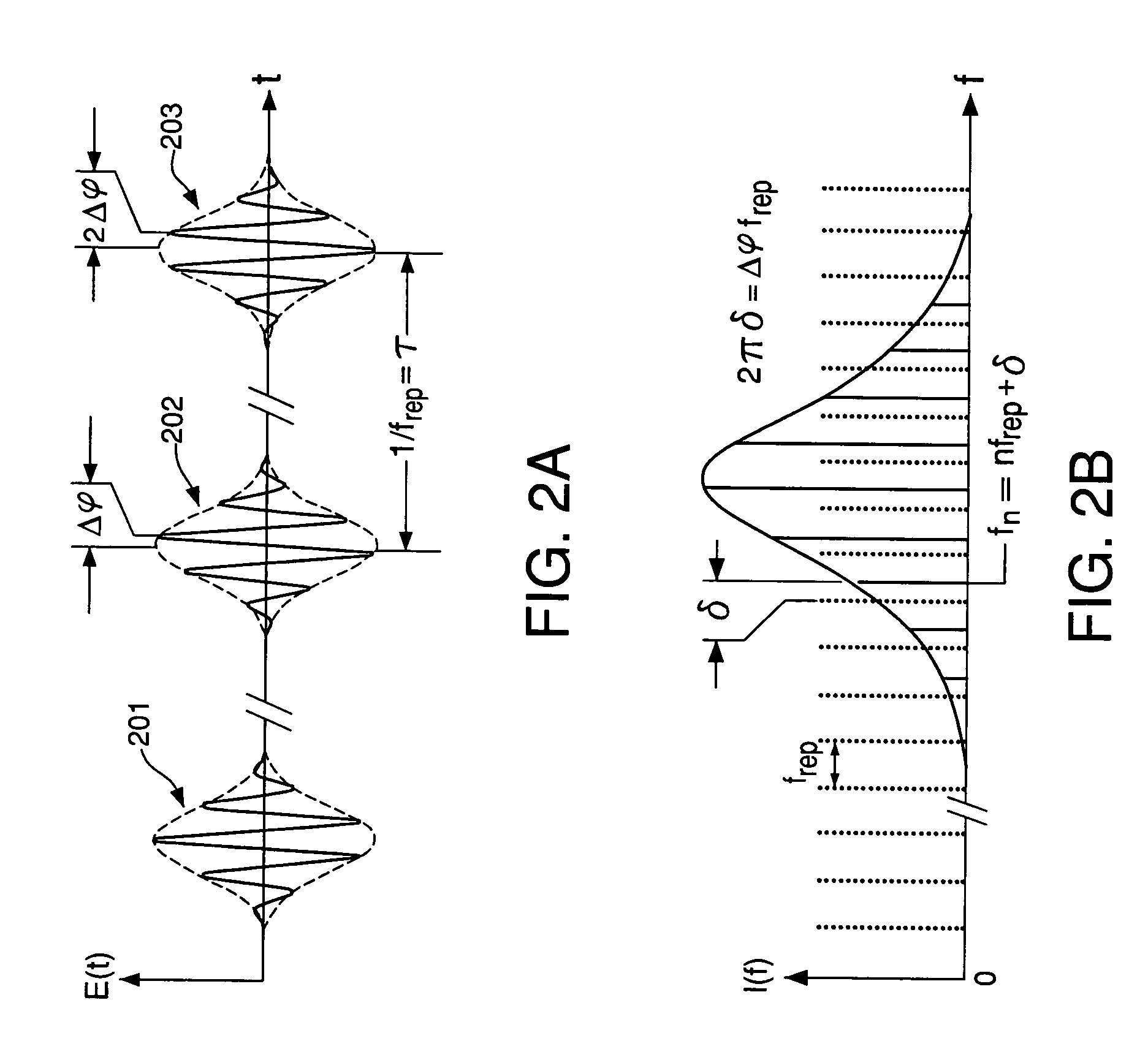Cloning optical-frequency comb sources
- Summary
- Abstract
- Description
- Claims
- Application Information
AI Technical Summary
Benefits of technology
Problems solved by technology
Method used
Image
Examples
Embodiment Construction
[0016]Although, the description of systems and methods representing various embodiments of the invention are primarily given in reference to optical communication systems, one skilled in the art will appreciate that the invention is not limited solely to communication systems. For example, systems and methods of the invention can similarly be used in the fields of metrology, medicine, and scientific research. In general, various embodiments of the invention can be utilized wherever two or more correlated light sources need to be provided.
[0017]FIG. 1 shows a block-diagram of a WDM communication system 100 according to one embodiment of the invention. System 100 is illustratively shown as having five communication nodes, i.e., a master node 110 and four slave nodes 120a–d. In the configuration of FIG. 1, only slave nodes 120a and 120c have direct communication links with master node 110. Each of slave nodes 120b and 120d does not have a direct communication link with master node 110 ...
PUM
 Login to View More
Login to View More Abstract
Description
Claims
Application Information
 Login to View More
Login to View More - R&D
- Intellectual Property
- Life Sciences
- Materials
- Tech Scout
- Unparalleled Data Quality
- Higher Quality Content
- 60% Fewer Hallucinations
Browse by: Latest US Patents, China's latest patents, Technical Efficacy Thesaurus, Application Domain, Technology Topic, Popular Technical Reports.
© 2025 PatSnap. All rights reserved.Legal|Privacy policy|Modern Slavery Act Transparency Statement|Sitemap|About US| Contact US: help@patsnap.com



